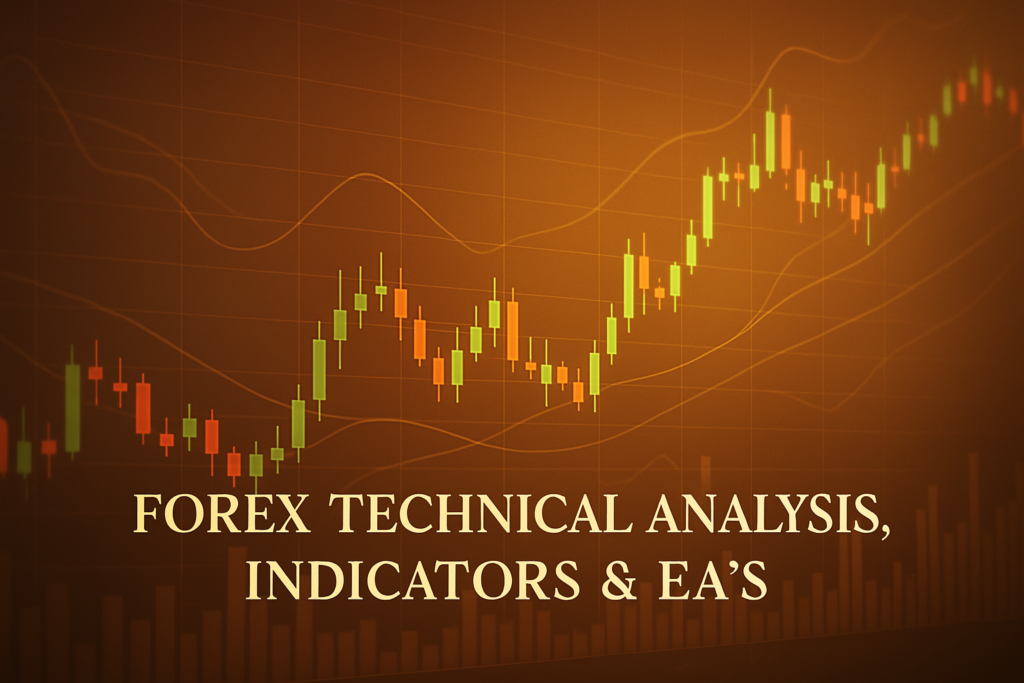
Envelope moving average is a key trading tool that helps identify trends and potential reversals in Forex trading, enhancing your trading strategies effectively.
The envelope moving average is a popular tool in Forex trading. It helps traders identify trends and potential price reversals. By using this technique, traders can spot when the price is moving too far from the average. This can help them make better decisions. Understanding the envelope moving average can give you an edge in the Forex market.
However, many traders, both beginners and professionals, struggle with it. They may find it complicated or hard to apply correctly. This can lead to missed opportunities and losses. It’s essential to grasp how to use the envelope moving average effectively. With the right knowledge, traders can enhance their strategies and boost their profits.
In this article, we will explore the envelope moving average in detail. We will cover its origin, advantages, disadvantages, and practical ways to apply it in Forex trading. You will learn about trading strategies that can help you succeed.
For those interested in the current market, check out our GBPUSD analysis and forecast. This will give you insights into one of the most traded currency pairs.
What is an Envelope Moving Average?
The envelope moving average is a type of moving average that has two lines above and below the main average line. These lines create a “band” around the price. This band helps traders see when the price is moving too far from the average. When the price touches or crosses these lines, it can signal a potential reversal. In simple terms, it acts like a guide to help traders understand market movements better.
Types of Envelope Moving Average
There are several types of envelope moving averages that traders use:
- Simple Envelope Moving Average: This is the most basic form. It uses the simple moving average to create the envelope.
- Exponential Envelope Moving Average: This type gives more weight to recent prices, making it more responsive to price changes.
- Weighted Envelope Moving Average: This type uses a weighted moving average, giving different weights to prices based on their age.
How Envelope Moving Average Smooths Out Price Action
The envelope moving average smooths out price action by averaging prices over a specific time. This reduces the noise in the market, helping traders focus on the overall trend. For example, if a currency pair has a lot of fluctuations, the envelope moving average will provide a clearer picture of the trend. Traders can then make more informed decisions based on these trends.
Common Periods Used and Why
Traders often use common periods like 20, 50, or 100 for the envelope moving average. A shorter period, like 20, reacts quickly to price changes. This is great for short-term trades. On the other hand, a longer period, like 100, gives a smoother view of the trend, ideal for long-term trading. Choosing the right period is crucial for effective trading.
The History of Envelope Moving Average: How It Became Popular
Origin of Envelope Moving Average
The envelope moving average was created to help traders better understand price movements. It was developed in the late 20th century as traders sought better tools for analyzing trends. The goal was to create a method that would provide clear signals for buying and selling.
When Did Traders Start Using It Widely?
Traders began using the envelope moving average widely in the early 2000s. With the rise of online trading platforms, more people had access to advanced trading tools. This made it easier for them to incorporate the envelope moving average into their strategies.
Real-Life Stories
Many professional traders have shared their success stories using the envelope moving average. For instance, one trader used it to navigate the market during a volatile period. By following the signals from the envelope moving average, they were able to make profitable trades, turning a small investment into a significant profit. Such stories inspire many new traders to learn and use this tool effectively.
Advantages and Disadvantages of Envelope Moving Average
Advantages:
- Helps Identify Trends Easily: The envelope moving average makes it simple to spot trends. When the price moves above or below the bands, it indicates potential trend changes.
- Useful for Dynamic Support and Resistance: The upper and lower lines can act as dynamic support and resistance levels, helping traders make better decisions.
- Works Well for Crossover Strategies: Traders can use it in combination with other moving averages to create crossover strategies for better entry and exit points.
Disadvantages:
- lags Behind Price Movements: Since the envelope moving average is based on past prices, it can lag behind current market movements. This means traders might miss some opportunities.
- Can Give False Signals in Sideways Markets: In a sideways market, the envelope moving average may generate false signals, leading to potential losses.
How to Apply Envelope Moving Average on MT4 & MT5
Step-by-Step Guide to Adding Envelope Moving Average on Charts
To add the envelope moving average on MT4 or MT5, follow these steps:
- Open your trading platform.
- Select the chart you want to analyze.
- Go to the “Insert” menu and choose “Indicators.”
- Find “Trend” and select “Envelope.”
- Adjust the settings as needed and click “OK.”
Customizing Envelope Moving Average Settings
You can customize the envelope moving average settings to fit your trading style. Change the periods, colors, and types (simple, exponential, or weighted) to suit your preferences. This can help you get clearer signals and improve your trading experience.
Saving Templates for Easy Application
To save time, you can create and save templates with your preferred envelope moving average settings. This way, you can apply the same settings to different charts quickly and efficiently, making your trading process smoother.
5 to 7 Trading Strategies Using Only Envelope Moving Average
All-Time Frame Strategy (M5 to D1)
This strategy works on all time frames. The idea is to look for price action that touches the upper or lower bands. When the price hits the upper band, consider selling. When it touches the lower band, consider buying. For example, if the price of EUR/USD touches the lower band, it may signal a buying opportunity.
Trending Strategies
In trending markets, the envelope moving average can help identify entry points. If the price is above the upper band, look for a potential selling opportunity. If it’s below the lower band, look for buying. For instance, if USD/JPY is trending upward and touches the lower band, it may suggest a buying opportunity.
Counter Trade Strategies
This strategy involves trading against the trend. If the price is nearing the upper band in a strong downtrend, it can signal a potential reversal. For example, if the GBP/USD is falling and approaches the upper band, it may indicate a chance to sell.
Swing Trades Strategies
Swing trading using the envelope moving average involves capturing price swings. When the price crosses back inside the bands after hitting the upper or lower band, it can signal a potential trade. For example, if AUD/USD hits the lower band and crosses back up, it may suggest a buying opportunity.
5 to 7 Trading Strategies Combining Envelope Moving Average with Other Indicators
All-Time Frame Strategy (M5 to D1)
This strategy combines the envelope moving average with the Relative Strength Index (RSI). When the RSI shows oversold conditions and the price touches the lower band, it’s a buying signal. For example, if the price of USD/CAD is at the lower band and the RSI is below 30, it suggests a potential buy.
Trending Strategies
Use the envelope moving average with MACD for trending markets. If the price is above the upper band and the MACD line crosses below the signal line, it indicates a selling opportunity. For example, if GBP/JPY is trading above the upper band and the MACD gives a sell signal, it may be time to sell.
Counter Trade Strategies
Combining the envelope moving average with Bollinger Bands can enhance counter trade strategies. If the price is near the upper band of Bollinger Bands and touches the upper envelope moving average, it may signal a selling opportunity. For instance, if NZD/USD is at these levels, consider selling.
Swing Trades Strategies
When combining with the Stochastic Oscillator, look for swing trade opportunities. If the price hits the lower envelope moving average and the Stochastic is crossing up, it’s a potential buy signal. For example, if EUR/CHF shows this pattern, it may be worth buying.
For those interested in the future market trends, check out our GBPUSD forecast June 03, 2025. This provides insights into potential market movements.
Top 10 FAQs About Envelope Moving Average
1. What is an envelope moving average?
The envelope moving average is a tool that helps traders identify price trends by creating upper and lower bands around a moving average.
2. How do I use the envelope moving average?
You can use it to identify potential buy and sell signals when the price touches or crosses the bands.
3. What are the best periods to use with the envelope moving average?
Common periods include 20, 50, or 100, depending on whether you prefer short-term or long-term trading.
4. Can the envelope moving average be used in all markets?
Yes, it can be applied to various markets, including Forex, stocks, and commodities.
5. What are the advantages of using the envelope moving average?
It helps identify trends, provides dynamic support and resistance levels, and works well for crossover strategies.
6. What are the disadvantages of using the envelope moving average?
It can lag behind price movements and may give false signals in sideways markets.
7. How can I customize the envelope moving average?
You can change the periods, colors, and types to fit your trading style.
8. Is the envelope moving average suitable for beginners?
Yes, the envelope moving average is user-friendly and can greatly assist beginners in understanding market trends.
9. How does the envelope moving average improve trading strategies?
It provides visual cues for market trends, allowing traders to make more informed decisions.
10. Should I test my strategies before using real money?
Absolutely! Always test your strategies in a demo account to refine your approach before trading with real money.
Conclusion
The envelope moving average is a powerful tool for Forex traders. It offers insights into market trends and potential turning points. By understanding its advantages and disadvantages, you can use it more effectively in your trading strategies.
To maximize your success, take the time to test various strategies using the envelope moving average. Remember, trading is a journey. The more you practice, the better you will become. Good luck with your trading!
If you’re just getting started, this guide can help you grasp the essentials Myfxbook, Finance Magnates
Expand Your Knowledge
- 📌 Forex Trading Learning Road Map
- 📌 Forex Trading Course with no Fees
- 📌 Forex Trading Issues, Problems, and Solutions
- 📌 Forex Daily Forecast & Live Updates
- 📌 Forex Fundamental & News Analysis: Tomorrow’s Market Movers & Trade Opportunities
- 📌 Forex Education Hub: Learn & Profit
- 📌 Forex Technical Analysis, Indicators & EA’s
Start Trading Today
Ready to take your forex trading to the next level? Open an account with Exness, one of the most trusted platforms in the industry. 👉 Sign Up Now and trade with confidence!
My recommended broker stands out with ultra-low spreads for beginners, instant withdrawals, and zero spread accounts for pro traders.
Trusted since 2008, lightning-fast execution, no hidden fees, and a secure, transparent trading environment—giving you the edge you need to succeed. 🚀
YouTube Video Library: Related Videos
Note: The video above is embedded from YouTube and is the property of its original creator. We do not own or take responsibility for the content or opinions expressed in the video.



